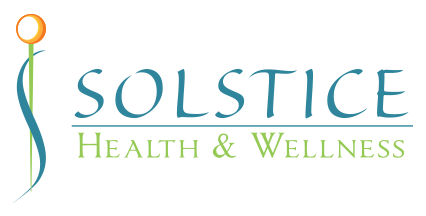Outpatient Alcohol Withdrawal Management:
A Safe Path to Recovery
Introduction
Alcohol withdrawal can be a daunting process, but with the right outpatient management, individuals can safely navigate the journey to sobriety without the need for hospitalization. Alcohol withdrawal management, also known as alcohol detox, can be effectively conducted at home, offering a flexible and controlled environment for those who are committed to sobriety while maintaining their daily responsibilities. This approach provides medical support, counseling, and monitoring, ensuring that the patient’s health is safeguarded during this critical period.
What is Alcohol Withdrawal, and Why Does it Happen?
When a person with alcohol use disorder suddenly reduces or stops their alcohol intake, the body reacts, leading to withdrawal symptoms. These symptoms can range from mild anxiety and tremors to more severe complications such as seizures and delirium tremens. The severity of symptoms often depends on the duration and intensity of alcohol use. Understanding the potential risks associated with alcohol withdrawal is crucial for managing the process effectively, especially in an outpatient setting.
Common symptoms of alcohol withdrawal include anxiety, irritability, tremors, sweating, nausea, headaches, and insomnia. In more severe cases, individuals may experience hallucinations, seizures, or delirium tremens (DTs), a potentially life-threatening condition characterized by confusion, rapid heartbeat, and high blood pressure.
Who is a Candidate for Outpatient Alcohol Withdrawal Management (a.k.a. Home Detox)?
Outpatient alcohol withdrawal management isn’t suitable for everyone. Home detox is generally recommended for individuals who have a stable home environment, a strong support system, and mild to moderate withdrawal symptoms. Patients must also be highly motivated to stick to their treatment plan, as the success of outpatient care heavily relies on the individual’s commitment to recovery.
Healthcare providers usually conduct a thorough assessment to determine if outpatient management is appropriate. Factors such as the patient’s medical history, the severity of their alcohol use disorder, and the presence of any co-occurring mental health conditions are considered during this evaluation.
Is Home Detox Safe?
Outpatient alcohol withdrawal management can be safe and effective for individuals who have a stable home environment and a strong support system. Medical supervision is a cornerstone of home detox. Regular check-ins with healthcare professionals help to monitor the patient’s progress and manage any withdrawal symptoms that may arise.
Medications may be prescribed to alleviate symptoms and reduce the risk of complications. These medications might include benzodiazepines for anxiety and seizures, or other supportive treatments to address insomnia, nausea, or headaches. Each treatment plan is tailored to the individual’s needs, and medication use is monitored closely by the healthcare team.
How Long Does the Alcohol Withdrawal Process Last?
The alcohol withdrawal process typically begins within 6 to 12 hours after the last drink and can last anywhere from a few days to a week. The most intense symptoms usually peak within 24 to 72 hours. However, some individuals may experience prolonged withdrawal symptoms, known as post-acute withdrawal syndrome (PAWS), which can persist for weeks or months.
Can Alcohol Withdrawal be Managed Without Medical Supervision?
It is strongly recommended not to attempt alcohol withdrawal without medical supervision, especially for those with a history of heavy drinking or severe symptoms. Alcohol withdrawal can be unpredictable and potentially life-threatening. Medical supervision ensures that symptoms are managed safely and effectively, reducing the risk of serious complications.
What Happens After Home Detox?
Alcohol withdrawal management is just the first step in a longer recovery journey. Once the immediate withdrawal symptoms have been managed, it’s essential to develop a comprehensive long-term plan to maintain sobriety. This plan might include ongoing therapy, medication therapy, lifestyle changes, and continued participation in support groups.
Healthcare providers often work with patients to identify triggers for relapse and develop strategies to manage these situations. A successful long-term recovery plan is tailored to the individual’s needs and includes regular follow-ups to monitor progress and make adjustments as necessary.
Conclusion
Outpatient alcohol withdrawal management provides a viable alternative to inpatient treatment for those who meet the criteria. With proper medical supervision, counseling, and a strong support network, individuals can safely manage their withdrawal symptoms and take the first steps toward a healthier, sober life.
Home detox allows patients to recover in a familiar environment while receiving necessary medical care. If you or someone you know is struggling with alcohol use disorder, consider consulting with a healthcare provider to determine if outpatient management or home detox is the right choice.
REFERENCES
- Muncie HL Jr, Yasinian Y, Oge’ L. Outpatient management of alcohol withdrawal syndrome. Am Fam Physician. 2013;88(9):589-595. https://www.aafp.org/afp/2013/1101/p589.html
- The ASAM clinical practice guideline on alcohol withdrawal management [published correction appears in J Addict Med. 2020;14(5):e280]. J Addict Med. 2020;14(3S suppl 1):1-72. DOI: 10.1097/ADM.0000000000000668
- Holt S, Tetrault JM. Ambulatory Management of Alcohol Withdrawal. UpToDate. www.uptodate.com.

Key Tips for Home Detox
Stay Committed to Your Recovery:
Dedication is key. Ensure you are fully committed to your treatment plan and recovery goals for successful outpatient management.
Build a Strong Support System:
Surround yourself with supportive friends, family, and healthcare professionals who can assist you during your recovery journey.
Understand Your Symptoms:
Educate yourself about alcohol withdrawal symptoms so you can recognize and report them to your healthcare provider promptly.
Follow Medical Advice Closely:
Adhere to all medical recommendations, including prescribed medications and regular check-ins with your healthcare provider.
Manage Stress Effectively:
Practice stress-reducing techniques like mindfulness, meditation, or deep breathing to help manage withdrawal-related anxiety.
Stay Hydrated and Nourished:
Maintain a healthy diet and drink plenty of water to support your body during withdrawal and recovery.
Avoid Triggers:
Identify and avoid situations, places, or people that may tempt you to drink or relapse.
Plan for the Long Term:
Work with your healthcare provider to develop a long-term sobriety plan that includes ongoing therapy, support groups, and lifestyle changes.
Monitor Your Progress:
Keep track of your recovery milestones and celebrate your progress to stay motivated throughout your journey.
Are You Seeking Help?
If you are dealing with an alcohol addiction, know that Solstice Health & Wellness can guide you on a path to a healthier lifestyle.
To schedule an appointment, or to learn more about addiction recovery services, contact us today to begin your road to recovery.
*Please do not submit any Protected Health Information (PHI).

- 1219 S East Ave
Suite 204
Sarasota, FL 34239
Map & Directions
- Phone: 941-330-9797
- Fax: 941-330-9798
Telehealth:
Stay safe! Don’t waste time or get sick in a waiting room.
Telehealth is a convenient way to get healthcare virtually anywhere without compromising your health further. You can use a computer, tablet, or phone to interact with the doctor in real-time through secure audio and video communication. Set up an appointment here.
- Monday: 8:00 am-5:00 pm
- Tuesday: 8:00 am-5:00 pm
- Wednesday: 8:00 am-5:00 pm
- Thursday: 8:00 am-5:00 pm
- Friday: 8:00 am-5:00 pm
- Saturday: Closed
- Sunday: Closed
© 2021 Solstice Health & Wellness.

